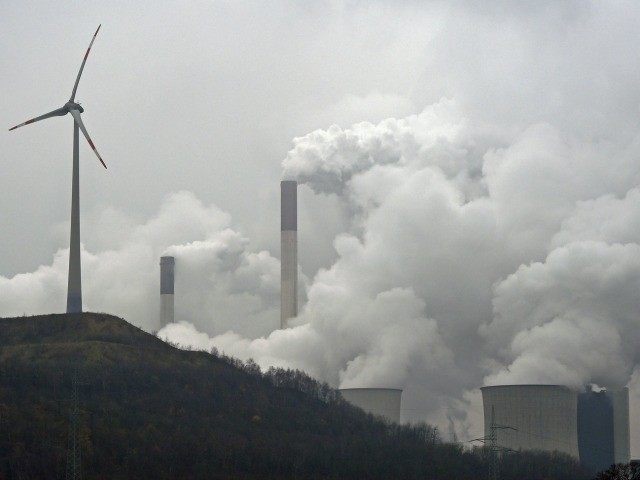E-mails obtained from the Environmental Protection Agency show that Harvard University, Syracuse University and two of their researchers appear to have falsely claimed a study supporting EPA’s upcoming global warming rules was conducted “independent(ly)” of the agency.
In early May, a study published in the journal Nature Climate Change purported to support a key EPA claim about its forthcoming global warming rules aimed at coal-fired power plants. The New York Times’ headline, “EPA Emissions Plan Will Save Thousands of Lives, Study Finds,” typified the media coverage.
Across the media, the authors were innocuously described as simply university-affiliated “researchers.” After all, the researchers had declared they had “no competing financial interests” in their study. Both universities had issued media releases heralding the study as the “first independent, peer-reviewed paper of its kind.”
Study co-author Charles Driscoll of Syracuse University told the Buffalo News, “I’m an academic, not a politician. I don’t have a dog in this fight.” The claim of independence was also emphatically asserted by study co-author Jonathan Buonocore of Harvard University. “The EPA, which did not participate in the study or interact with its authors, Buonocore says, roundly welcomed its findings.” [Emphasis added].
But a closer look at these claims of independence raises serious doubts.
An online search of EPA’s web site revealed that Syracuse’s Driscoll has previously involved as a principal investigator in studies that received over $3.6 million in research grants from EPA. Co-author Dallas Burtraw, a researcher at the think tank Resources for the Future, had been involved in previous EPA grants totaling almost $2 million. Harvard co-author Jonathan I. Levy had been involved in over $9.5 million worth of grants. Co-author Joel Schwartz, also of Harvard, had been previously involved in over $31 million worth of grants from EPA.
Are we to believe that a group of researchers who had previously received some $45 million in grants from EPA, no doubt hoping for more in the future, could possibly not have any dog in this fight? It’s probably not necessary to ask how this slipped past the incurious mainstream media.
Intrigued by Bounocore’s odd assertion of absolutely no involvement with EPA, I submitted a request to EPA under the Freedom of Information Act for email between the study authors and EPA staff. Although subsequent wrangling with agency staff gave me doubt that I would ever get anything, I received, much to my surprise, 99 pages of emails after mere weeks.
The emails reveal that study co-authors Driscoll, Buonocore, Schwartz and Harvard’s Kathy Lambert were definitely in contact with key EPA staff regarding this research.
A July 8, 2014 email shows Lambert arranging a conference call with EPA staff to get EPA’s input on the study. One of the EPA staff involved was the contact person for agency’s Clean Power Plan cost-benefit analysis. A subsequent e-mail shows that the top EPA staffer on the Clean Power Plan cost-benefit analysis was added to the call.
A July 15, 2014 email from Driscoll to an EPA staffer boasts of “considerable interest” in their analysis from unnamed outside “groups.” One sentence after buttering up the EPA staffer, Driscoll asks her if they could have a phone call to discuss fundraising for a conference Driscoll is organizing. No appearance of attempted financial conflict there?
A November 7, 2014 e-mail from Lambert to EPA about the study reads, “We would like to follow back up with you by phone to discuss possible next steps in this analysis and what role you might be able to play.”
This issue goes deeper than mere truth-telling. The EPA’s controversial Clean Power Plan hinges on the notion that shuttering coal plants will save lives.
The EPA’s proposed global warming plan ostensibly focuses on reducing carbon dioxide emissions from coal plants. But the bulk of the alleged benefits of the plan actually arise from collateral projections of lives supposedly saved by reducing coal plant emissions related to particulate matter and ozone.
As EPA values each life “saved” at about $10 million, the claim that the rules will save 6,600 lives per year puts the rules’ alleged benefits on the order of $66 billion per year, far in excess of industry projections of the rules’ costs.
These EPA claims, however, are controversial to say the least. A compelling alternate view is that no lives will be saved because, for one reason, EPA’s own extensive clinical research shows that particulate matter and ozone in outdoor air do not kill anyone.
The only casualty in this case is our confidence in the independence of EPA-funded researchers.
Steve Milloy publishes JunkScience.com (@JunkScience).

COMMENTS
Please let us know if you're having issues with commenting.